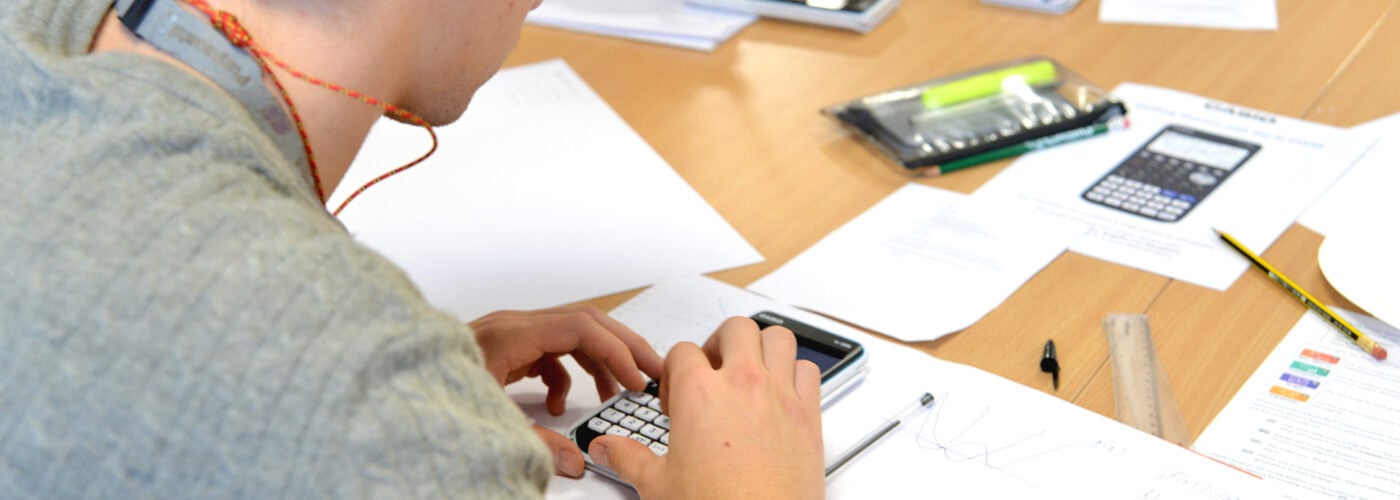Variance of a binomial distribution: formula, examples and calculation

Binomial distributions – which are used to calculate the probability of observing a certain number of successes in a given number of events – form a key part of statistics exams. A binomial distribution formula can be used when a question includes the following four key criteria:
1. A fixed number of observations (or trials, as they are also referred to)
2. Each observation must be independent
3. There are only two potential outcomes of each trial, which can be considered ‘success’ and ‘failure’
4. The probability of success or failure is the same in each trial
However, in some circumstances, exam questions will ask for more than finding binomial distributions of an event. They may also require students to calculate variance for these problems, which requires a different calculation than the usual binomial distribution formula.
Understanding variance in the context of binomial distribution
Within this context, variance refers to a measure of the dispersion of the probabilities with respect to the mean value. The higher the variation, the more likely it is that a result will differ from the expected value.
In practical terms, a very low variance for a binomial distribution would indicate that, if we conduct multiple experiments, the total number of successes that are observed during each experiment would be likely to fall close to the expected number of successes.
In exams, students may be asked a range of questions that require them to find the variance of a binomial distribution. Some examples may be phrased as follows:
Find the variance of binomial distribution given where the number of trials is 200 and probability of success is 0.75.
If the number of trials in a binomial distribution is 300, the probability of success is 0.4 and the probability of failure is 0.6 then, calculate the variance of the binomial distribution.
Formula for variance of a binomial distribution
The variance about the expected number of successes is given by the formula Var(X) =np(1−p), where n is the number of independent trials and p is the probability of success for any individual trial.
For a simple example, consider rolling a fair six-sided die, where ‘success’ is defined as rolling a six. This means that p = 1/6. Therefore, applying the above formula for an experiment of 20 trials would give the following:
Var(X)=20(1/6)(1−(1/6))
Leading to
Var(X)=2.77
This gives us the variance of the discrete random variable X. The square root of this figure then gives the standard deviation for the distribution, so σ=1.67.
Step-by-step calculation of binomial variance
In order to calculate the variance of a binomial distribution, the first step is to determine the values of the two parameters that are required to define a binomial distribution. These are the total number of independent trials (n) and the probability of success on an individual trial (p).
Once these have been identified, the variance can be calculated using the above formula. An example of how a problem may be worded in an exam using a real-world application is as follows:
“A driver attempts to start an old car every morning. The engine successfully starts on 90% of the days. Assuming independence of the engine start attempts, consider the binomial distribution that indicates the probabilities of different numbers of successful starts over the course of a week.
What is the variance of this distribution?
To solve this problem, the first step is to identify the parameters. In the above case, n (the number of trials) will be seven (for one full week) and p (the success rate) is 0.9.
By entering the above values into the formula, we find:
Var(X)=7(0.9)(1−0.9)=0.63
Therefore, the variance of the binomial distribution to describe the probability of successful starts per week is 0.63.
Common mistakes when calculating the variance of a binomial
Perhaps the most common error that students may make when being asked to calculate the variance of a binomial is putting the wrong figure for p. Often, this comes down to confusing the probability of success with the probability of failure, so it’s essential that students are able to interpret the questions correctly to find the right values before attempting to use the formula.
Calculating variance in real-world scenarios
There are a range of applications for variance in real-world scenarios that it is helpful to explain to students when dealing with binomial distributions. Some situations where this needs to be taken into account include:
- In route planning, adjusting for any delays in expected times taken
- In manufacturing, improving quality control by identifying errors
- In healthcare, understanding differences in the effectiveness of treatments



